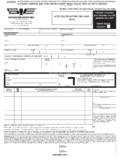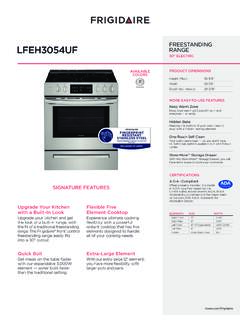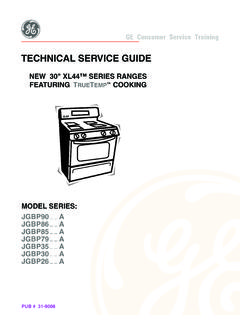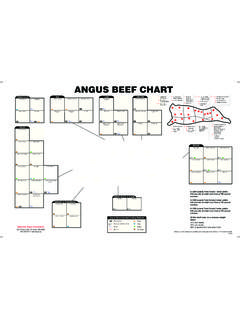Transcription of PACKAGING & LABELING - Southeastern Freight Lines
1 23 PALLETIZING SHIPMENTSTo palletize a shipment properly, you should always: Vertically align edges of boxes. Make sure the top is flat and level. Secure Freight with shrink film, stretch wrap or banding. Use quality lumber in pallet. Never nail into end Freight Lines COVERAGE AREA TRANSPORTATION SERVICES TECHNOLOGY 22 Freight CLASSIFICATIONA key part of rating shipments moving by truckaccurately is the description of the article beingshipped. To provide an equitable, consistentstandard to identify and rate commodities wetransport, we use the National Motor FreightClassification (NMFC). The NMFC providesclasses for all articles shipped based on theirhandling characteristics: loadability, PACKAGING ,susceptibility to damage and other bill of lading should include the properNMFC item number(s) for each article you are uncertain about a Freight classifica-tion, please contact our Traffic Department at and have the followinginformation available: Description of the item to be shipped Density of the item How the item is used How the item is packagedDETERMINING DENSITY AND CUBIC FEETD ensity is the weight of a commodity per cubic foot.
2 It is used to determine the classification of some products, such as plastic articles. Generally, commodities which are more dense have lower class , less dense commodities usuallyhave higher class ratings. The lower the class,the lower the charge per determine the density of a shipment, multiply the length, width and height of yourshipment, then divide that figure by 1,728 to obtain the cubic feet of the the weight by the number of cubicfeet produces the shipment s pounds per cubic & LABELINGLABELING SHIPMENTSA ccuracy and consistency are vital when youare preparing your Freight for shipment. Besure all labels are legible and complete. Theshipper and consignee must correspond onthe bill of lading and on the A CARGO CLAIMOur goal is to handle every shipment in such a way that you never need to file a , should filing a claim be necessary,we ll process it in a prompt and Freight Lines acknowledges allclaims within 30 days. In fact, we resolve 98% of all claims within 30 days.
3 Should you need to make a claim, please either mail yourclaim forms to Southeastern Freight LinesClaims Department, Box 1691, Columbia,SC 29202; fax a copy of the claim ; or file your claim online For the most expeditious service, only file your claim in one of theabove & DrumsCoilsBoxes & CartonsRugs & CarpetsIf a shipment is palletized, the dimensions and weight of thepallet must be used to determine density. For example, a pallet 6" high plus a 22" carton has a total height of 28". The weight must include the weight of the x 40 x 28 = 53,760 cubic inches53,760 1,728 = cubic feet120 = lb per cubic footAvoid interlocking, which can reduce the carton s top-to-bottom compression strength by up to 50%.Avoid pyramiding, since the top packages can be easily pallet overhang, which can reduce compressionstrength by up to 32%.Avoid misalignment, which can reduce compressionstrength by up to 30%.Avoid extending Freight beyond the pallet, becausethere is no support for the overhanging feet must be known to determinecharges on Puerto Rico x 20 x 22 = 9,240 cubic inches9,240 1,728 = cubic feet90 = lb per cubic footVisit to obtain a claim form or filea claim online.
4 Certificates of Insurance also areavailable under Customer Forms on the PREPARATIONSERVICE CENTER DIRECTORY DIRECT POINTS SERVED PARTNER POINTS SERVED Southeastern Freight Lines was awardedChar-Broil's 2001 LTL carrier of the year award. This award recognizes thecarrier that was number one in overall performance in six categories. Southeastern was truly outstanding intheir performance in the area of claim management. SEFL handled over 13,000shipments with a claim ratio of ,well below the industry average of Being recognized as Best of the Best emphasizes Southeastern s commitment to continuous improvement. Char-Broil'ssuccess depends on carriers such as SEFLand their willingness and desire to buildbeneficial alliances with their supply chain partners. Southeastern , thanks for a job well done. DAVID ATKINSON, Director of Logistics,Char-Broil










